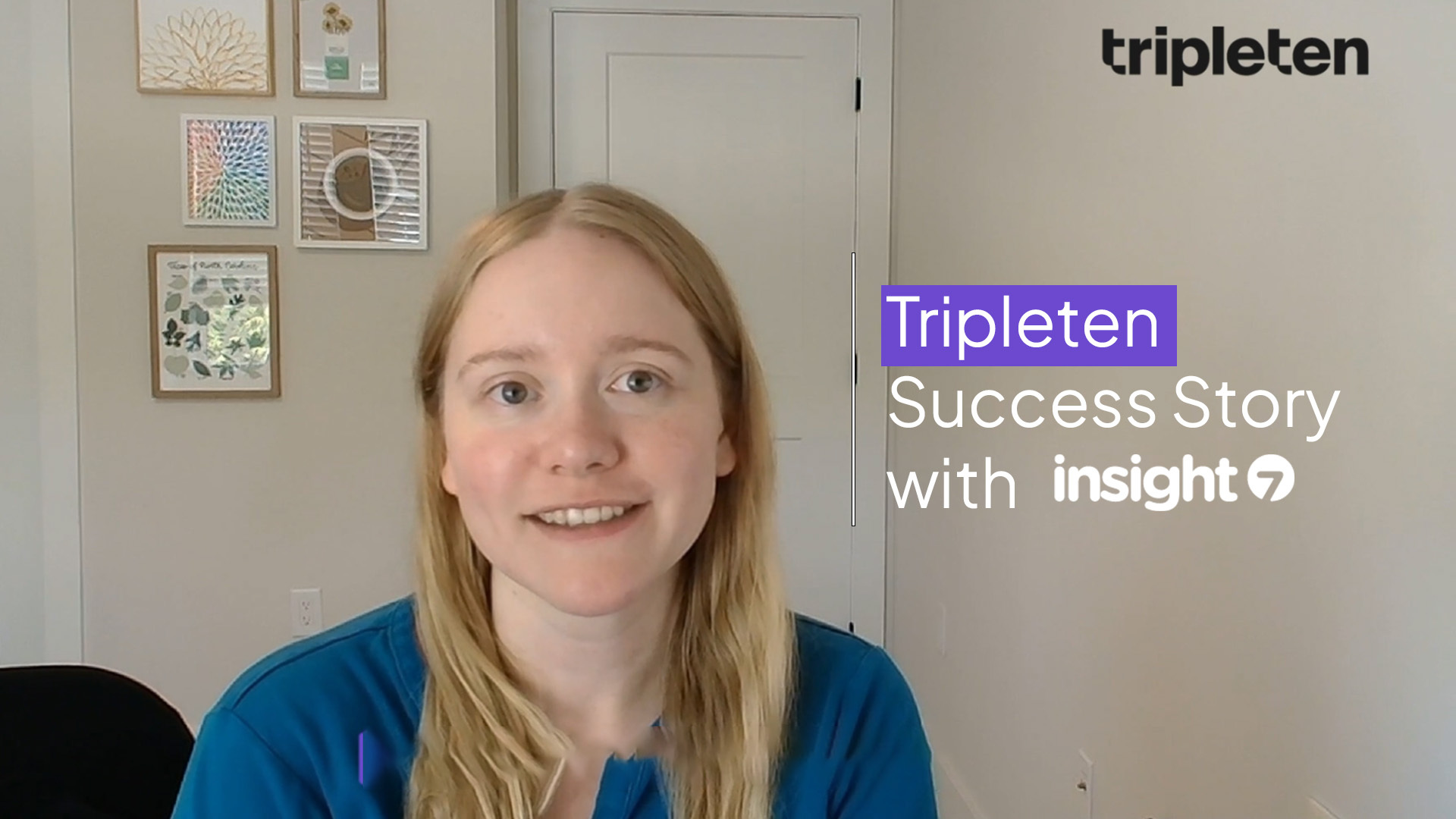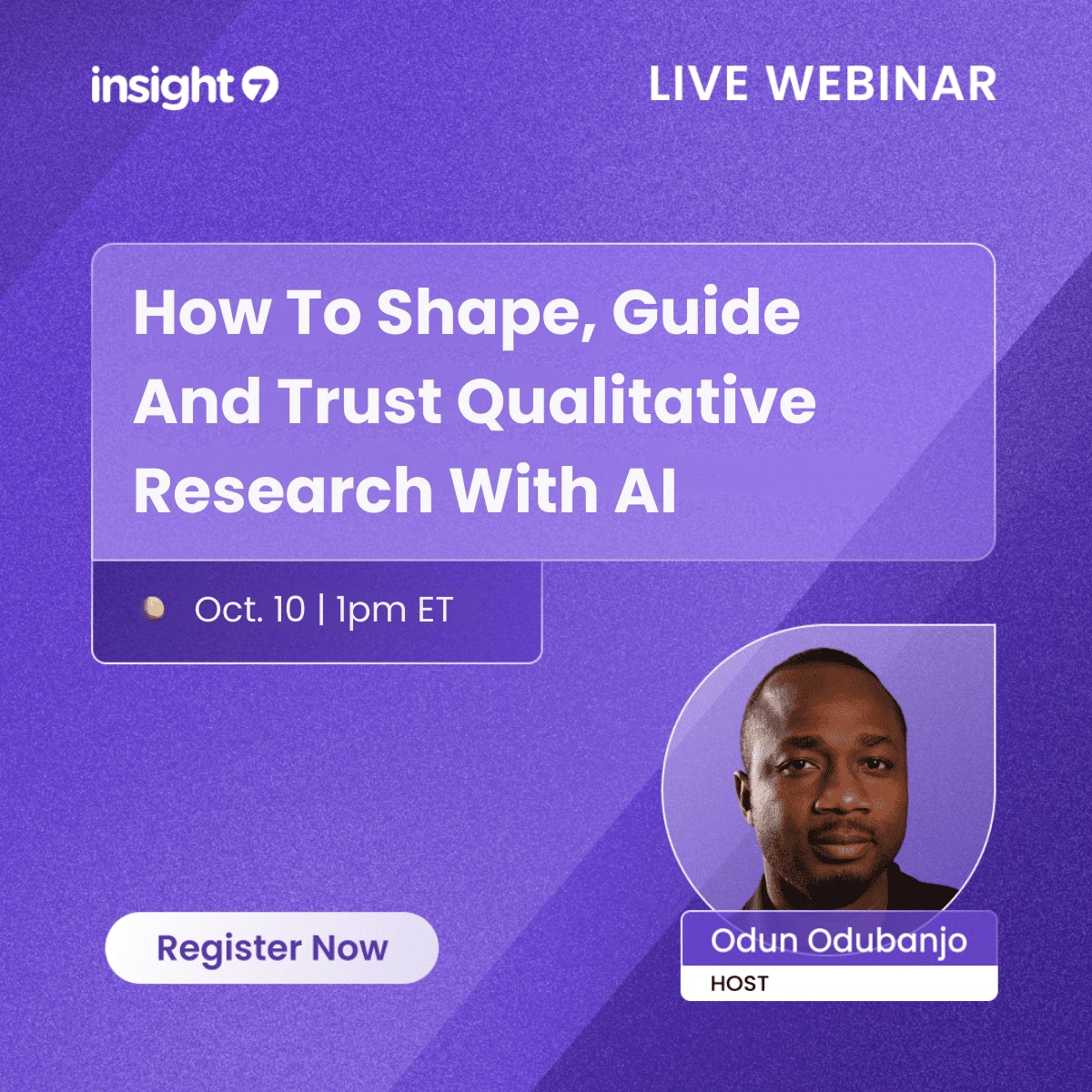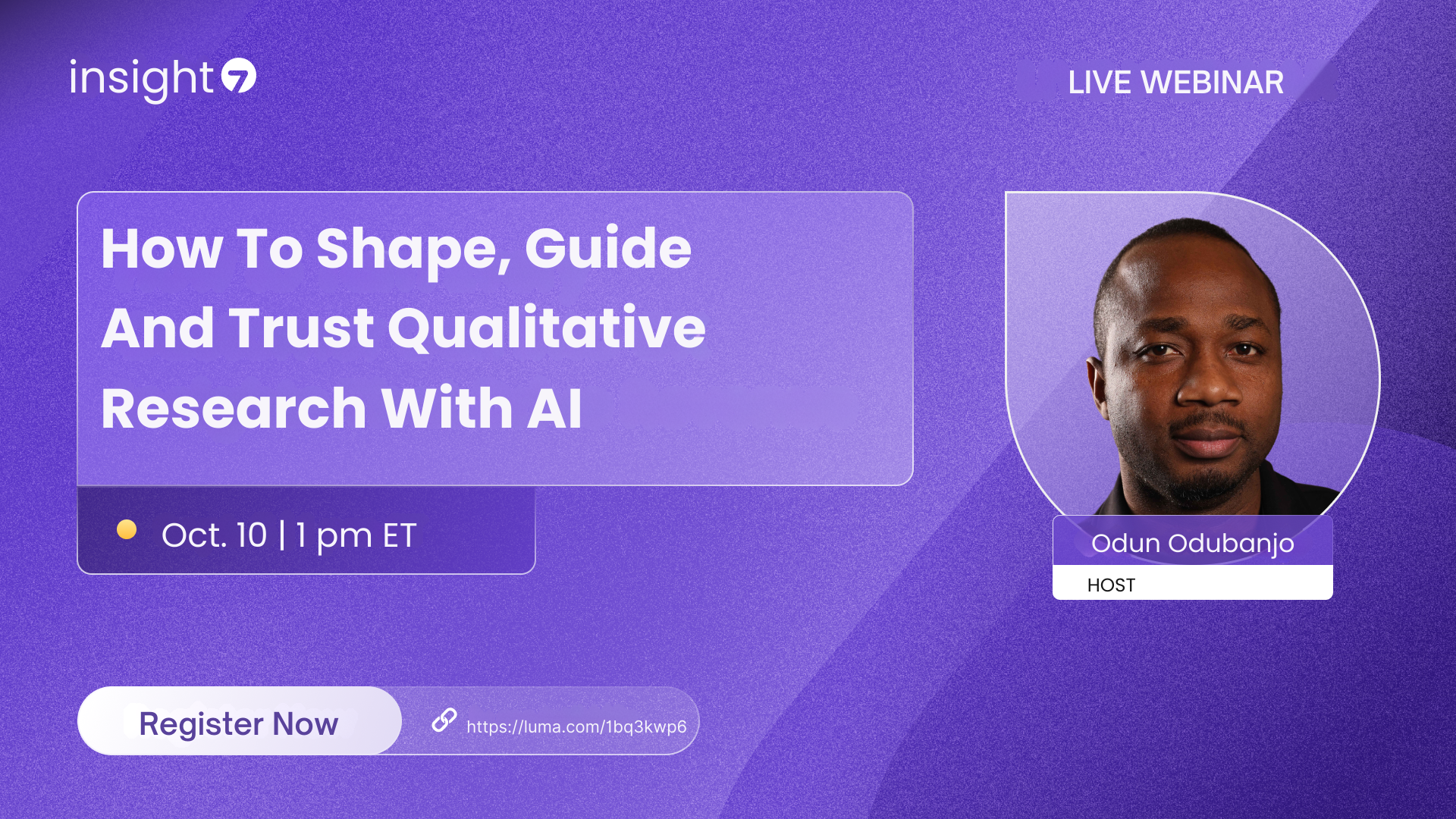How to generate keywords from client interviews
-
Bella Williams
- 10 min read
Interview Keyword Extraction serves as a crucial tool in transforming client conversations into actionable insights. By effectively identifying and extracting keywords from client interviews, businesses can unveil underlying themes that shape customer perceptions and needs. This process helps organizations understand specific client language and preferences, providing clarity to decision-makers.
Initiating the keyword extraction journey begins with transcribing interviews. Following this, the key phrases that clients frequently use can be highlighted. Categorizing these keywords according to their respective themes not only enhances comprehension but allows stakeholders to address client desires more precisely. The method of Interview Keyword Extraction gives businesses a competitive edge in understanding client feedback and improving services.
Generate visualizations from your qualitative data. At Scale.

Understanding the Basics of Interview Keyword Extraction
Interview Keyword Extraction enables you to curate significant insights from client conversations, enhancing your understanding of their needs and preferences. The process begins with active listening and identifying recurring themes in the dialogue. This involves paying attention to the language clients use and the specific terms they emphasize. Recognizing key phrases not only aids in extracting meaningful keywords but also helps build a comprehensive profile of your audience's requirements.
To effectively conduct Interview Keyword Extraction, start by transcribing the recordings. Following transcription, highlight repeated phrases and categorize keywords based on the identified themes. This structured approach facilitates the creation of relevant keywords that accurately capture clients' sentiments. Utilizing advanced tools can further enhance this process, ensuring that you capture the essential elements that drive your client's insights and contribute to better comprehension of their needs.
Identifying Key Themes and Topics
Identifying key themes and topics from client interviews is crucial for effective interview keyword extraction. Start by systematically organizing the content gathered from interviews, such as transcriptions and notes. This helps in pinpointing common discussions and recurring concerns among clients, revealing insights that can guide keyword generation. By clustering similar ideas, you can uncover significant themes that reflect the target audience's needs and pain points.
Next, categorize the identified themes into actionable topics. For instance, consider breaking themes into categories like resource allocation, feedback analysis, and customer experiences. This organization facilitates a more focused analysis, allowing you to draw connections across different interviews. Ultimately, identifying key themes and topics empowers organizations to refine their messaging and improve their understanding of client perspectives, paving the way for generating impactful keywords that resonate with their audience.
Analyzing Client Language and Phrases
Analyzing client language and phrases is a crucial element in the process of Interview Keyword Extraction. By concentrating on specific words and expressions used by clients, you can discern valuable insights that might otherwise go unnoticed. This linguistic analysis allows you to capture the essence of client concerns and preferences, providing an effective foundation for keyword generation. Make it a practice to listen not just for content, but for the emotional undertones and specific terminologies that clients use to articulate their needs.
To ensure thorough analysis, start by transcribing interview discussions. Then, highlight frequently mentioned phrases that resonate with the core issues. Organizing these keywords by thematic categories enhances clarity and encourages strategic keyword usage in future content. Understanding client language helps fine-tune the messaging, ensuring it aligns with the target audience's vernacular and improves communication effectiveness. Such an approach not only generates keywords but also fosters trust and connection with clients.
Evaluate Performance on Customer Calls for Quality Assurance.
Techniques for Effective Interview Keyword Extraction
To achieve effective interview keyword extraction, several techniques can significantly enhance the process. Start with manual extraction steps that lay a solid foundation for gathering relevant keywords. First, transcribe the interview accurately, ensuring that every nuanced detail is captured. Then, highlight phrases and terms that appear repeatedly, as these often indicate points of interest for your clients. Finally, categorize the extracted keywords by themes to create a structured keyword library. This organization allows for easier retrieval and analysis later.
In addition to manual techniques, employing tools can greatly expedite the interview keyword extraction process. Consider utilizing platforms like Insight7, which offer advanced AI-driven keyword analysis for deeper insights. Tools like Google Keyword Planner and SEMrush provide extensive resources for keyword research and competitor analysis. Each tool serves a unique purpose, making it easier to compile a comprehensive list of keywords tailored to your client's needs. By combining manual efforts with specialized tools, you optimize your keyword extraction process for better outcomes.
Manual Extraction Steps
To effectively engage in manual extraction steps, start by transcribing the interview. This crucial first step captures every detail of the conversation, ensuring that no significant insight is lost. Once the transcription is complete, read through the text carefully. Look for key phrases that are frequently mentioned by the client, as they often signify essential themes or concerns.
Next, focus on highlighting those repeated phrases. This process helps in identifying keywords that resonate most with the client’s thoughts. Finally, categorize these keywords by theme. Grouping similar keywords will not only clarify the insights gained but also simplify the process of generating an actionable keyword list. Organizing keywords thematically enhances understanding and aids in better addressing the client’s needs, thereby making yourInterview Keyword Extraction more precise and informative.
- Transcribe the Interview
Transcribing the interview serves as the foundational step in the process of Interview Keyword Extraction. When you listen to recordings, it can be challenging to extract meaningful insights directly. Thus, converting those recordings into written text facilitates easier analysis. By having a clear transcript, you can engage with the content on a deeper level and spot the keywords that emerge throughout the conversation.
Once the interview is transcribed, it's essential to read through the text carefully. Look for repeated phrases and language that resonate with your target audience. This step helps in identifying key themes and topics that align with your business objectives. Transcribing not only enhances accessibility but also lays the groundwork for a more systematic extraction of insights. Armed with a transcript, you can begin the journey of transforming client conversations into actionable keywords that drive future strategies.
- Highlight Repeated Phrases
During client interviews, highlighting repeated phrases serves as a fundamental step in effective Interview Keyword Extraction. As clients express their ideas, they often use specific terms or phrases that echo their sentiments. These repetitions can reveal critical insights into their priorities, preferences, and pain points. By paying close attention to these phrases, you can construct a comprehensive list of keywords that reflect the core themes of the conversation.
To effectively highlight repeated phrases, start by transcribing the interview accurately. Once the transcription is available, read through it carefully, underlining or marking any phrases that stand out as frequently mentioned. Next, categorize these highlighted phrases by thematic relevance to understand broader contexts. Organizing keywords around these themes enhances clarity and allows your team to extract meaningful insights for marketing or product development purposes. Remember, capturing authentic client language strengthens the relevance of your keyword strategy, ensuring it aligns tightly with audience expectations.
- Categorize Keywords by Theme
To effectively categorize keywords by theme, begin by grouping similar ideas and expressions that emerge from client interviews. This approach aids in simplifying data analysis, allowing for quicker identification of key insights. As you review the transcribed interviews, focus on the main topics clients discuss most frequently, which may serve as overarching themes. Themes like "customer pain points," "resource allocation," and "feedback analysis" provide a structured way to compile various keywords.
Once the themes are established, delve deeper into each category. For instance, under "customer pain points," you might find specific issues customers face, which helps create a comprehensive list of related keywords. This method not only enhances content relevance but also improves your ability to address client concerns. By organizing keywords by theme, you position yourself to extract actionable insights, guiding future strategies and fostering better client relationships.
Utilizing Tools for Keyword Generation
To effectively generate keywords from client interviews, utilizing specialized tools is crucial. These tools can assist in transcribing calls, identifying relevant keywords, and extracting meaningful insights. By employing platforms designed for keyword generation, you can streamline the analysis process and focus on the content's value.
First, you can use advanced AI-driven tools like Insight7 for extracting keywords and phrases from multiple interview transcriptions simultaneously. Additionally, tools such as Google Keyword Planner provide comprehensive keyword research features, helping you identify search volume and competition levels. SEMrush and Ubersuggest offer insights on competitor keywords and user-friendly interfaces for brainstorming.
Lastly, AnswerThePublic is an excellent tool that visualizes keyword data, allowing you to understand user intent better. By effectively combining these resources, you will make your interview keyword extraction process more efficient and insightful.
- Insight7: Advanced AI-driven keyword analysis
Advanced AI-driven keyword analysis transforms the process of Interview Keyword Extraction by employing sophisticated algorithms to sift through vast amounts of data derived from client interactions. This approach significantly reduces the time traditionally required to analyze and identify crucial insights from interviews, enabling businesses to respond more efficiently to customer needs and market demands.
The power of AI in this context is twofold. First, it automates the transcription and analysis phases, extracting pertinent keywords and themes with remarkable accuracy. Second, it highlights client phrasing and language, ensuring that keywords resonate with target audiences. By utilizing AI-driven tools, companies can streamline their processes, allowing teams to focus on strategic decision-making instead of getting bogged down in manual keyword analysis. Ultimately, this leads to actionable insights that drive competitive advantage and propel business growth.
- Google Keyword Planner: Comprehensive keyword research tool
In the context of Interview Keyword Extraction, Google Keyword Planner serves as a valuable resource for identifying relevant keywords and phrases that resonate with client needs. This comprehensive keyword research tool allows you to input the themes and topics derived from interviews, providing insights into search volume and competition for various terms. By aligning your findings with user queries, it helps translate client language into actionable keywords.
To effectively utilize Google Keyword Planner, follow these steps:
- Input Relevant Themes: Enter keywords related to the client discussions, capturing the essence of their language and needs.
- Analyze Suggestions: Review the keyword suggestions generated by the tool, paying close attention to related phrases that may not have been initially considered.
- Focus on Metrics: Examine the search volumes and competition levels for each keyword to prioritize those that will drive the most traffic.
By using Google Keyword Planner, you can transform insights gained from client interviews into a focused keyword strategy that enhances online visibility.
- SEMrush: Powerful tool for competitor keyword analysis
When diving into SEMrush, users encounter a versatile platform that excels in competitor keyword analysis. This tool allows you to dissect your competitors' strategies, providing valuable insights into successful keywords they employ. By entering a competitor's domain or a specific keyword, you can uncover data regarding search volume, keyword difficulty, and potential traffic.
In the realm of Interview Keyword Extraction, using SEMrush can enhance your process. Start by identifying keywords your competitors rank for and analyze how these relate to common themes in your client interviews. This comparison not only sharpens your understanding of clients' needs but also reveals opportunities to optimize your use of language and phrases. Ultimately, leveraging insights from this powerful tool ensures your keyword strategy is competitive and well-informed, helping you to craft more targeted and effective content.
- Ubersuggest: User-friendly interface for keyword ideas
Ubersuggest offers an intuitive platform for generating keyword ideas that can greatly enhance your interview keyword extraction process. With its user-friendly interface, even those with minimal technical expertise can dive right in. Users can quickly navigate the dashboard to access essential features, such as keyword suggestions based on actual search data. This makes it particularly helpful when analyzing insights derived from client interviews.
One of the standout features of Ubersuggest is its ability to pull relevant keywords and phrases from transcripts or interviews, instantly highlighting themes that resonate with your target audience. By simply inputting potential keywords or phrases, you can see how they perform in search results, aiding in identifying additional topics for discussion in client interviews. This tool simplifies the keyword research process, saving valuable time when crafting effective strategies based on interviews.
- AnswerThePublic: Visual keyword research tool
Utilizing a visual keyword research tool can significantly enhance your understanding of client interviews. Once you conduct thorough interviews, sifting through the feedback can be challenging. This is where a visual keyword research tool comes in handy by transforming raw data into easily digestible information. By inputting your interview notes, you can quickly identify trending topics and common queries, which aids in extracting relevant keywords for your marketing strategy.
Moreover, the data visualization helps in spotting keyword patterns and areas of interest among your clients. As you delve deeper, you can examine the questions clients frequently ask, allowing for a more sophisticated approach to Interview Keyword Extraction. This method not only streamlines your keyword generation process but also aligns your content strategy with actual client needs, enabling effective communication and engagement. Ultimately, visual tools enhance your capabilities in distilling valuable insights from interviews into actionable keywords.
Conclusion on Interview Keyword Extraction
Effective Interview Keyword Extraction is crucial for synthesizing valuable information from client conversations. By focusing on key themes, phrases, and specific client language, organizations can identify the most relevant keywords that encapsulate the insights gained from interviews. This process allows teams to distill complex discussions into actionable terms that guide marketing strategies, product development, and overall business decisions.
In summary, the success of Interview Keyword Extraction hinges on the ability to systematically analyze and categorize data. Implementing both manual techniques and leveraging advanced tools can significantly enhance this extraction process. Ultimately, the insights derived will not only inform stakeholders but also drive future initiatives and foster a deeper understanding of client needs.







